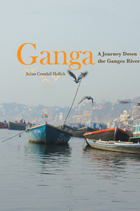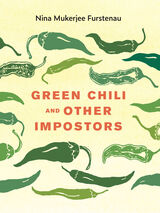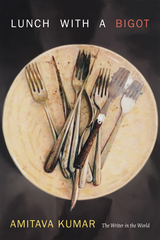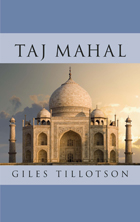
Yet there remains a paradox: while Ganga is worshipped devotedly, she is also exploited without remorse. Much of her water has been siphoned off for irrigation, toxic chemicals are dumped into her, and dams and barrages have been built on her course, causing immense damage. Ganga is in danger of dying—but if the river dies, will the goddess die too?
The question took journalist Julian Crandall Hollick on an extraordinary journey through northern India: from the river’s source high in the Himalayas, past great cities and poor villages, to lush Saggar Island, where the river finally meets the sea. Along the way he encounters priests and pilgrims, dacoits and dolphins, the fishermen who subsist on the river, and the villagers whose lives have been destroyed by her. He finds that popular devotion to Ganga is stronger and blinder than ever, and it is putting her—and her people—in great risk.
Combining travelogue, science, and history, Ganga is a fascinating portrait of a river and a culture. It will show you India as you have never imagined it.

Food history is a world heritage story that has all the drama of a tense thriller or maybe a mystery. Whose food is it? Who gets to tell its tale? Respect for food history might tame the accusations of appropriation, but what is at stake as food traditions and biodiversity ebb away is the great, and not always good, story of us.


An enduring monument of haunting beauty, the Taj Mahal seems a symbol of stability itself. The familiar view of the glowing marble mausoleum from the gateway entrance offers the very picture of permanence. And yet this extraordinary edifice presents a shifting image to observers across time and cultures. The meaning of the Taj Mahal, the perceptions and responses it prompts, ideas about the building and the history that shape them: these form the subject of Giles Tillotson’s book. More than a richly illustrated history—though it is that as well—this book is an eloquent meditation on the place of the Taj Mahal in the cultural imagination of India and the wider world.
Since its completion in 1648, the mausoleum commissioned by the fifth Mughal emperor, Shah Jahan, for his wife Mumtaz Mahal, has come to symbolize many things: the undying love of a man for his wife, the perfection of Mughal architecture, the ideal synthesis of various strands of subcontinental aesthetics, even an icon of modern India itself. Exploring different perspectives brought to the magnificent structure—by a Mughal court poet, an English Romantic traveler, a colonial administrator, an architectural historian, or a contemporary Bollywood filmmaker—this book is an incomparable guide through the varied and changing ideas inspired by the Taj Mahal, from its construction to our day. In Tillotson’s expert hands, the story of a seventeenth-century structure in the city of Agra reveals itself as a story about our own place and time.
READERS
Browse our collection.
PUBLISHERS
See BiblioVault's publisher services.
STUDENT SERVICES
Files for college accessibility offices.
UChicago Accessibility Resources
home | accessibility | search | about | contact us
BiblioVault ® 2001 - 2024
The University of Chicago Press









